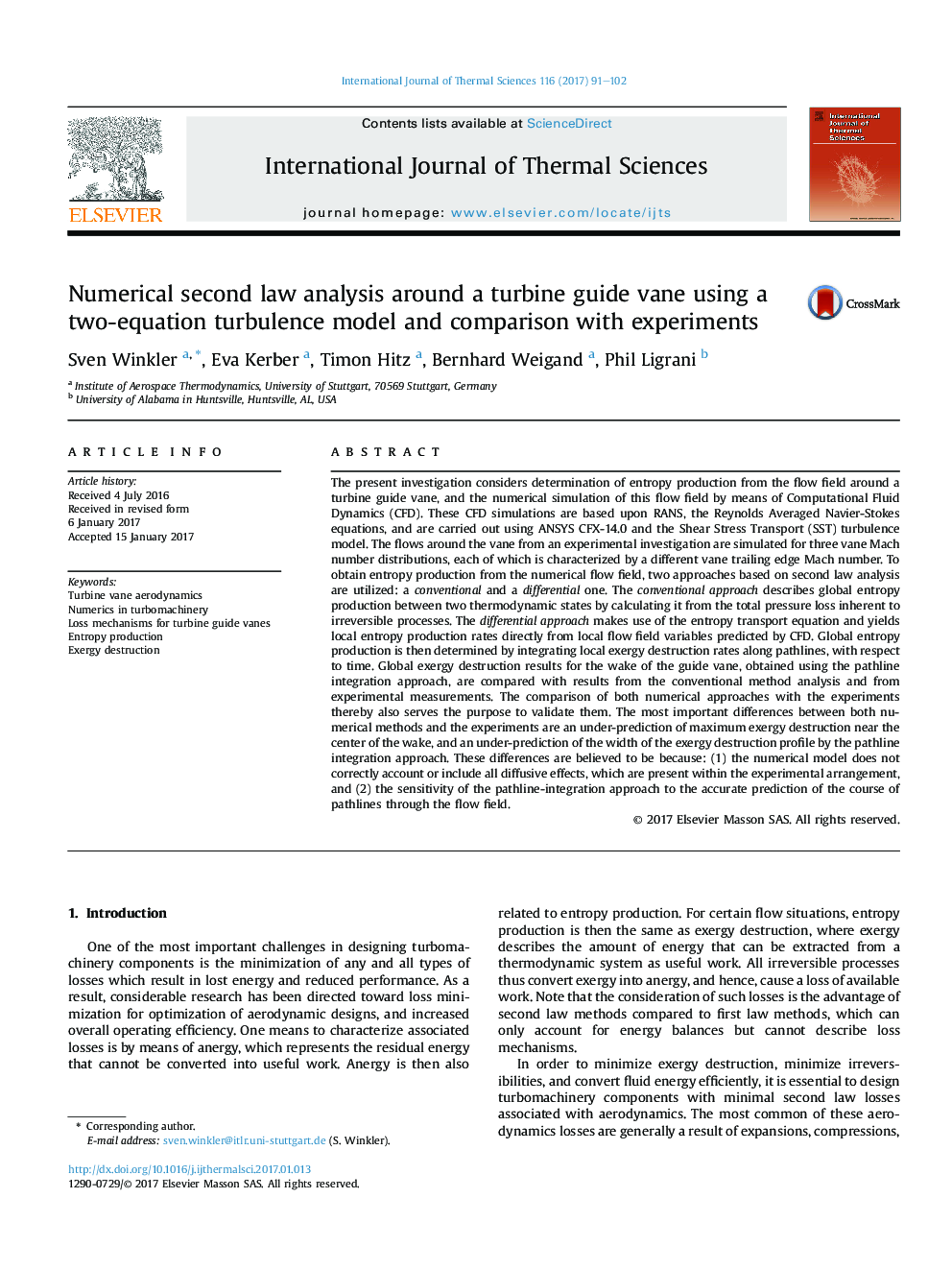| کد مقاله | کد نشریه | سال انتشار | مقاله انگلیسی | نسخه تمام متن |
|---|---|---|---|---|
| 4995330 | 1458706 | 2017 | 12 صفحه PDF | دانلود رایگان |
عنوان انگلیسی مقاله ISI
Numerical second law analysis around a turbine guide vane using a two-equation turbulence model and comparison with experiments
ترجمه فارسی عنوان
تجزیه و تحلیل قانون دوم عددی در اطراف یک توربین راهنمای تورنبل با استفاده از مدل آشفتگی دو معادله و مقایسه با آزمایشات
دانلود مقاله + سفارش ترجمه
دانلود مقاله ISI انگلیسی
رایگان برای ایرانیان
کلمات کلیدی
آیرودینامیک توربینی عدد در توربوماچینگ، مکانیزم های از دست دادن برای لبه های توربین تولید آنتروپی، تخریب اگزرژی،
موضوعات مرتبط
مهندسی و علوم پایه
مهندسی شیمی
جریان سیال و فرایندهای انتقال
چکیده انگلیسی
The present investigation considers determination of entropy production from the flow field around a turbine guide vane, and the numerical simulation of this flow field by means of Computational Fluid Dynamics (CFD). These CFD simulations are based upon RANS, the Reynolds Averaged Navier-Stokes equations, and are carried out using ANSYS CFX-14.0 and the Shear Stress Transport (SST) turbulence model. The flows around the vane from an experimental investigation are simulated for three vane Mach number distributions, each of which is characterized by a different vane trailing edge Mach number. To obtain entropy production from the numerical flow field, two approaches based on second law analysis are utilized: a conventional and a differential one. The conventional approach describes global entropy production between two thermodynamic states by calculating it from the total pressure loss inherent to irreversible processes. The differential approach makes use of the entropy transport equation and yields local entropy production rates directly from local flow field variables predicted by CFD. Global entropy production is then determined by integrating local exergy destruction rates along pathlines, with respect to time. Global exergy destruction results for the wake of the guide vane, obtained using the pathline integration approach, are compared with results from the conventional method analysis and from experimental measurements. The comparison of both numerical approaches with the experiments thereby also serves the purpose to validate them. The most important differences between both numerical methods and the experiments are an under-prediction of maximum exergy destruction near the center of the wake, and an under-prediction of the width of the exergy destruction profile by the pathline integration approach. These differences are believed to be because: (1) the numerical model does not correctly account or include all diffusive effects, which are present within the experimental arrangement, and (2) the sensitivity of the pathline-integration approach to the accurate prediction of the course of pathlines through the flow field.
ناشر
Database: Elsevier - ScienceDirect (ساینس دایرکت)
Journal: International Journal of Thermal Sciences - Volume 116, June 2017, Pages 91-102
Journal: International Journal of Thermal Sciences - Volume 116, June 2017, Pages 91-102
نویسندگان
Sven Winkler, Eva Kerber, Timon Hitz, Bernhard Weigand, Phil Ligrani,
